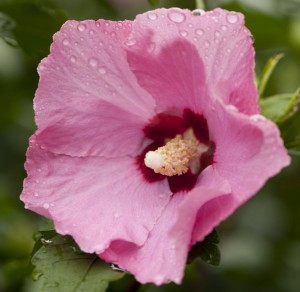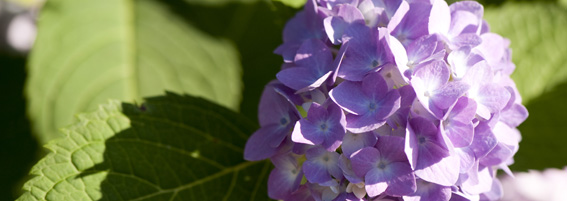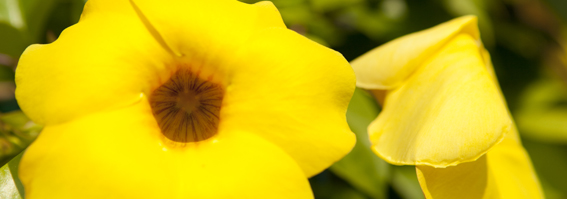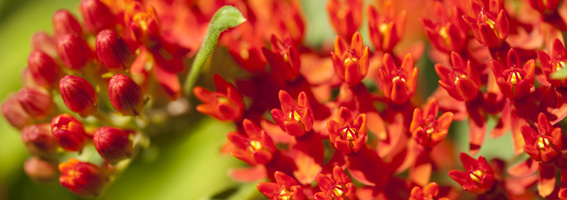Storm Clean-Up 101: Salt-Tolerant Plants
Posted in Gardening Tips on March 18 2013, by Jody Payne
 On the heels of Sonia Uyterhoeven’s informative series on post-hurricane garden recovery, Jody Payne, the Director of both our Rock Garden and the soon-to-reopen Native Plant Garden, offers a listing of hardy and salt-tolerant plants worth including in your garden or landscape. With proper planning and a solid understanding of the conditions facing these new inclusions, this supplement should put you on the path to a sturdier coastal planting–not to mention less storm season stress.
On the heels of Sonia Uyterhoeven’s informative series on post-hurricane garden recovery, Jody Payne, the Director of both our Rock Garden and the soon-to-reopen Native Plant Garden, offers a listing of hardy and salt-tolerant plants worth including in your garden or landscape. With proper planning and a solid understanding of the conditions facing these new inclusions, this supplement should put you on the path to a sturdier coastal planting–not to mention less storm season stress.
“Salt tolerance is a relative term,” Payne adds. “Some of the recommended species here would be better sited away from prevailing winds, perhaps sheltered by a building or hill. This list is meant to open ideas for which plants are salt tolerant, but choices should be further researched based on the actual conditions of your site.”
This is quite a long list, but it’s intended to show you just how wide-open your options are when it comes to planting a coastal or near-sea plot. Head below for the many tree, shrub, annual, and perennial species available, and stay tuned in the coming weeks for a follow-up from Travis Beck, the NYBG’s Landscape and Garden Projects Manager.
Have questions we haven’t answered yet? Leave them in the comments! With access to some of the finest horticultural minds in the country, if not the world, we’re more than happy to help you with your post-Sandy gardening conundrums.
Trees & Shrubs

| Amelanchier canadensis — Shadbush | Amorpha fruticosa — False indigo-bush | Aucuba japonica — Spotted laurel |
| Carya ovata — Shagbark hickory | Catalpa speciosa — Northern catalpa | Chaenomeles speciosa — Flowering quince |
| Clethra alnifolia — Sweet pepperbush | Comptonia peregrina — Sweetfern | Cotoneaster species |
| Daphne odora — Winter daphne | Forsythia spp. | Forsythia x intermedia — Border forsythia |
| Gymnocladus dioicus — Kentucky coffeetree | Hamamelis virginiana — Witch-hazel | Hibiscus syriacus — Rose of Sharon |
| Hydrangea macrophylla — Bigleaf hydrangea | Hydrangea spp. | Hypericum spp. |
| Ilex cornuta — Chinese holly | Ilex glabra — Inkberry | Juglans cinerea — White walnut |
| Juglans nigra — Eastern black walnut | Juniperus chinensis — Chinese juniper | Juniperus conferta — Shore juniper |
| Juniperus horizontalis — Creeping juniper | Juniperus procumbens — Japanese garden juniper | Juniperus virginiana — Red juniper |
| Larix decidua — European larch | Larix laricina — American larch | Lespedeza bicolor — Shrubby bushclover |
| Ligustrum japonicum — Japanese privet | Liquidambar styraciflua — Sweetgum | Magnolia grandiflora — Southern magnolia |
| Mahonia bealei — Leatherleaf mahonia | Oxydendrum arboreum — Sorrel tree | Picea pungens — Blue spruce |
| Pinus mugo — Mugo pine | Potentilla fruticosa — Shrubby cinquefoil | Prunus caroliniana — Cherry laurel |
| Pyracantha coccinea — Scarlet firethorn | Quercus alba — White oak | Quercus phellos — Willow oak |
| Quercus robur — English oak | Rhodotypos scandens — Jetbead | Robinia hispida — Bristly locust |
| Robinia pseudoacacia — Black locust | Rosa rugosa — Rugosa rose | Sambucus canadensis — American elderberry |
| Spiraea spp. | Styrax japonicas — Japanese snowbell | Symphoricarpos albus — Snowberry |
| Syringa patula ‘Miss Kim’ — Miss Kim Korean lilac | Syringa pekinensis — Pekin lilac | Syringa reticulata — Japanese tree lilac |
| Tamarix ramosissima — Saltcedar | Taxodium distichum — Bald cypress | Ulmus parvifolia — Lacebark elm |
| Vitex agnus-castus — Chasteberry |
Annuals

| Allamanda cathartica — Golden trumpet | Aptenia cordifolia — Heartleaf ice plant | Bougainvillea glabra — Paper flower/lesser bougainvillea |
| Carissa macrocarpa — Natal plum | Cuphea hyssopifolia — False heather | Drosanthemum hispidum — Hairy dewflower |
| Ficus pumila — Creeping fig | Ipomoea pescaprae — Beach morning glory | Ipomoea stolonifera — Fiddle-leaf morning glory |
| Lampranthus productus — Purple ice plant | Malephora crocea — Coppery mesemb | Tecomaria capensis — Cape honeysuckle |
| Trachelospermum jasminoides — Star jasmine | Tradescantia pallida — Purple heart | Zamia integrifolia — Florida arrowroot |
Perennials

| Acorus americanus — American sweet flag | Alisma plantago-aquatica — Common water-plantain | Ammophila brevigulata — American beachgrass |
| Asclepias incarnata — Swamp milkweed | Asclepias tuberosa — Butterfly weed | Baptisia australis — Blue wild indigo |
| Cakile edentula — Sea rocket | Caltha palustris — Marsh marigold | Carex stricta — Tussock sedge |
| Coreopsis verticillata — Thread-leaf coreopsis | Crinum species | Delosperma ‘Alba’ |
| Delosperma cooperi — Trailing ice plant | Delosperma nubigenum — Hardy ice plant | Distichlis spicata — Seashore saltgrass |
| Eupatorium album — White thoroughwort | Hedychium species | Hesperaloe parviflora — Red yucca |
| Heuchera americana — Alumroot | Hibiscus moscheutos — Rose mallow | Iberis sempervirens — Evergreen candytuft |
| Iris versicolor — Blue flag | Juncus gerardii — Blackgrass | Juncus militaris — Bayonet rush |
| Kosteletzkya virginica — Seashore mallow | Lathyrus maritimus — Sea pea | Lechea maritima — Beach pinweed |
| Leersia oryzoides — Rice cutgrass | Limonium carolinianum — Lavender thrift | Maianthemum canadense — Canada mayflower |
| Monarda fistulosa — Wild bergamot | Nipponanthemum nipponicum — Nippon daisy | Nuphar lutea — Yellow pond-lily |
| Nymphaea odorata — American white waterlily | Oenothera biennis — Common evening primrose | Opuntia humifusa — Eastern prickly pear |
| Panicum amarum — Bitter panicgrass | Panicum virgatum — Switchgrass | Peltandra virginica — Green arrow arum |
| Pontederia cordata — Pickerelweed | Rudbeckia fulgida — Orange coneflower | Sagittaria latifolia — Broadleaf arrowhead |
| Saururus cernuus — Lizard’s tail | Schizachyrium scoparium — Little bluestem | Scirpus pungens — Common threesquare |
| Scirpus atrovirens — Green bulrush | Scirpus maritimus — Cosmopolitan bulrush | Scirpus robustus — Sturdy bulrush |
| Scirpus tabernaemontani — Softstem bulrush | Solidago sempervirens — Seaside goldenrod | Sparganium americanum — American bur-reed |
| Sparganium eurycarpum — Broadfruit bur-reed | Spartina alterniflora — Smooth cordgrass | Spartina patens — Saltmeadow cordgrass |
| Spartina pectinata — Prairie cordgrass | Symphyotrichum novi-belgii — New York aster | Thelypteris palustris — Marsh fern |
| Typha latifolia — Broadleaf cattail | Typha angustifolia — Narrowleaf cattail |


Apparently, not roses. The storm surge was about 6-7 feet deep on my street in Oceanside, although the water drained within hours. I just planted four bare root roses from j and p about a week and a half ago, and they are already dead. My existing bushes are dead or close to it, although my mini rose bush and two of my hybrid teas that had previously reverted to rootstock seem to be leafing out. So is my zephyr in drouhin (leafing out). The gardener laid seed down on the lawn, all of which is just laying there on the surface like a lox, not sprouting at all. We cannot spare $275 for soil testing. Thank you, Sandy.